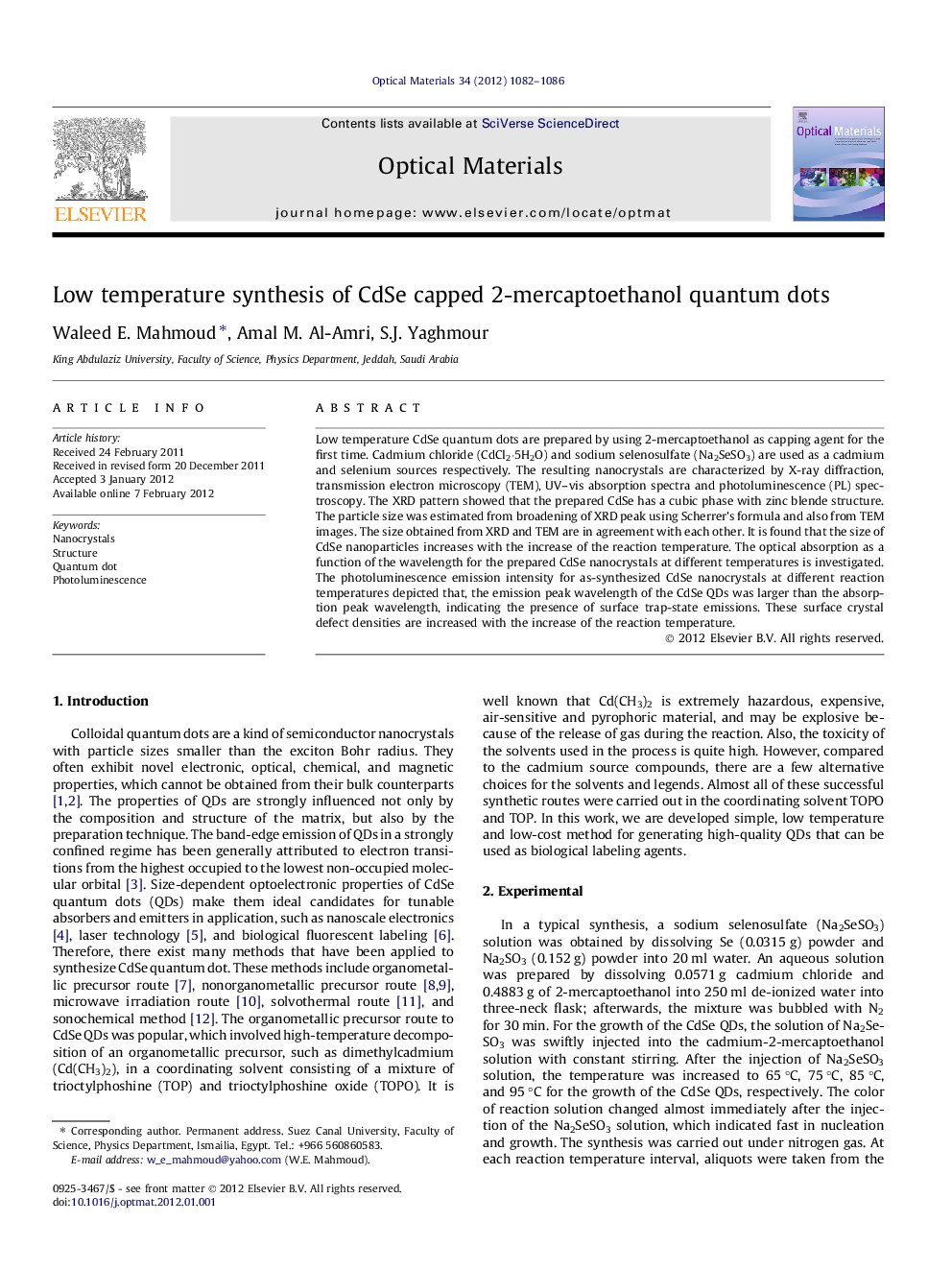| Article ID | Journal | Published Year | Pages | File Type |
|---|---|---|---|---|
| 1495816 | Optical Materials | 2012 | 5 Pages |
Low temperature CdSe quantum dots are prepared by using 2-mercaptoethanol as capping agent for the first time. Cadmium chloride (CdCl2·5H2O) and sodium selenosulfate (Na2SeSO3) are used as a cadmium and selenium sources respectively. The resulting nanocrystals are characterized by X-ray diffraction, transmission electron microscopy (TEM), UV–vis absorption spectra and photoluminescence (PL) spectroscopy. The XRD pattern showed that the prepared CdSe has a cubic phase with zinc blende structure. The particle size was estimated from broadening of XRD peak using Scherrer’s formula and also from TEM images. The size obtained from XRD and TEM are in agreement with each other. It is found that the size of CdSe nanoparticles increases with the increase of the reaction temperature. The optical absorption as a function of the wavelength for the prepared CdSe nanocrystals at different temperatures is investigated. The photoluminescence emission intensity for as-synthesized CdSe nanocrystals at different reaction temperatures depicted that, the emission peak wavelength of the CdSe QDs was larger than the absorption peak wavelength, indicating the presence of surface trap-state emissions. These surface crystal defect densities are increased with the increase of the reaction temperature.
► Low temperature CdSe QDs are prepared using 2-mercaptoethanol as capping agent. ► The prepared CdSe QD has a cubic phase with zinc blende structure. ► The average particle size of the CdSe DQs is increased by increasing temperature. ► The FWHM of the PL spectra was decreased as the temperature increases. ► PL peak position is red shifted compared with absorption peak.
